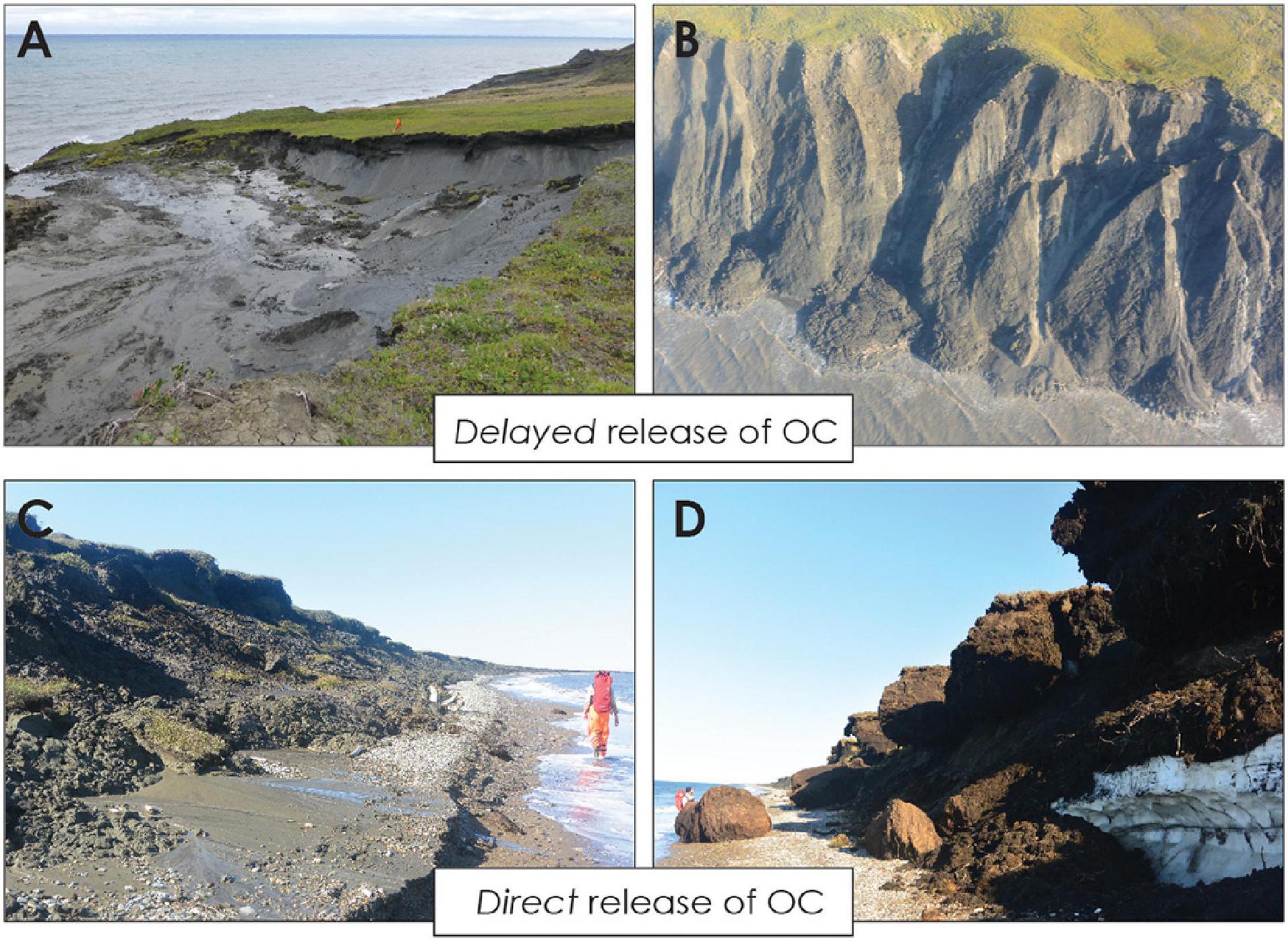Warming air and sea temperatures, longer open-water seasons and sea-level rise collectively promote the erosion of permafrost coasts in the Arctic, which profoundly impacts organic matter pathways.
Although estimates on organic carbon (OC) fluxes from erosion exist for some parts of the Arctic, little is known about how much OC is transformed into greenhouse gases (GHGs). In this study we investigated two different coastal erosion scenarios on Qikiqtaruk – Herschel Island (Canada) and estimate the potential for GHG formation. We distinguished between a delayed release represented by mud debris draining a coastal thermoerosional feature and a direct release represented by cliff debris at a low collapsing bluff.

Carbon dioxide (CO2) production was measured during incubations at 4°C under aerobic conditions for two months and were modeled for four months and a full year. Our incubation results show that mud debris and cliff debris lost a considerable amount of OC as CO2(2.5 ± 0.2 and 1.6 ± 0.3% of OC, respectively). Although relative OC losses were highest in mineral mud debris, higher initial OC content and fresh organic matter in cliff debris resulted in a ∼three times higher cumulative CO2 release (4.0 ± 0.9 compared to 1.4 ± 0.1 mg CO2 gdw–1), which was further increased by the addition of seawater. After four months, modeled OC losses were 4.9 ± 0.1 and 3.2 ± 0.3% in set-ups without seawater and 14.3 ± 0.1 and 7.3 ± 0.8% in set-ups with seawater. The results indicate that a delayed release may support substantial cycling of OC at relatively low CO2production rates during long transit times onshore during the Arctic warm season. By contrast, directerosion may result in a single CO2 pulse and less substantial OC cycling onshore as transfer times are short. Once eroded sediments are deposited in the nearshore, highest OC losses can be expected.
We conclude that the release of CO2 from eroding permafrost coasts varies considerably between erosion types and residence time onshore. We emphasize the importance of a more comprehensive understanding of OC degradation during the coastal erosion process to improve thawed carbon trajectories and models.


